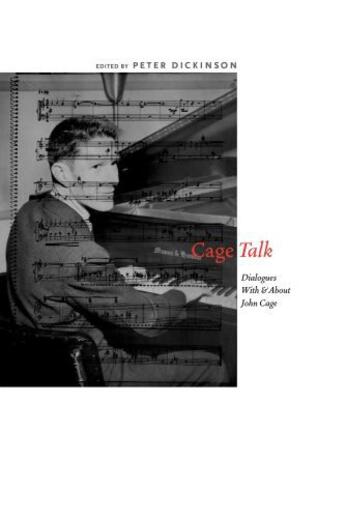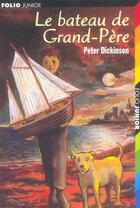-
Nombre de pages : (-)
-
Collection :
(-)
-
Genre :
(-)
-
Thème :
Non attribué
-
Prix littéraire(s) :
(-)
Résumé:
John Cage was one of America's most renowned composers from the 1940s until his death in 1992. But he was also a much-admired writer and artist, and a uniquely attractive personality able to present his ideas engagingly wherever he went. As an interview subject he was a consummate professional. ... Voir plus
John Cage was one of America's most renowned composers from the 1940s until his death in 1992. But he was also a much-admired writer and artist, and a uniquely attractive personality able to present his ideas engagingly wherever he went. As an interview subject he was a consummate professional. The main source of "CageTalk: Dialogues with and about John Cage" is a panoply of vivid and compulsively readable interviews given to Peter Dickinson in the late 1980s for a BBC Radio 3 documentary. The original BBC program lasted an hour but the full discussions with Cage and many of the main figures connected with him have remained unpublished until now. "CageTalk" also includes earlier BBC interviews with Cage, including ones by the renowned literary critic Frank Kermode and art critic David Sylvester. And the editor Peter Dickinson contributes little-known source material about Cage's "Musicircus" and "Roaratorio" as well as a substantial introduction exploring the multiple roles that Cage's varied and challenging output played during much of the twentieth century and continues to play in the early twenty-first. Apart from the long interview with Cage himself, there are discussions with Bonnie Bird, Earle Brown, Merce Cunningham, Minna Lederman, Otto Luening, Jackson Mac Low, Peadar Mercier, Pauline Oliveros, John Rockwell, Kurt Schwertsik, Karlheinz Stockhausen, Virgil Thomson, David Tudor, La Monte Young, and Paul Zukovsky. Most of the interviews were given to Peter Dickinson but there are others involving Rebecca Boyle, Anthony Cheevers, Michael Oliver, and Roger Smalley. Peter Dickinson, British composer and pianist, is emeritus professor, University of Keele and University of London, and has written or edited several books about twentieth-century music, including "Copland Connotations" (Boydell Press, 2002) and "The Music of Lennox Berkeley" (Boydell Press, 2003).
Donner votre avis















